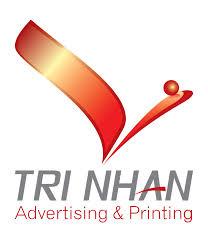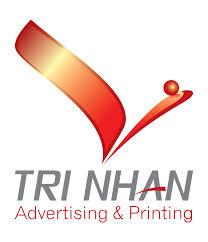While 5G continues its global rollout, the world's leading researchers and technology firms are already laying the groundwork for its successor, the sixth generation of wireless technology, or 6G. Envisioned as a monumental leap beyond current capabilities, 6G is not merely an incremental speed upgrade. It aims to create a fully integrated, intelligent, and ubiquitous network that seamlessly merges the physical, digital, and biological worlds. This future network will operate in the terahertz (THz) frequency spectrum, promising speeds up to 100 times faster than 5G, with latency reduced to the microsecond level. At its core, 6G will be a network with native artificial intelligence, capable of sensing, learning, and optimizing itself in real-time, enabling a new wave of applications that are currently the stuff of science fiction, from holographic communication to the Internet of Senses.
The economic implications of this technological leap are almost unimaginable, representing one of the most significant investment cycles in modern history. The dawn of the 6G era is projected to create a market of immense scale, with its size estimated to surge to a valuation of USD 800.0 Billion by the year 2035. This monumental growth will be fueled by an extraordinary compound annual growth rate (CAGR) of 51.86% during the 2025-2035 forecast period. This financial forecast underscores the transformative potential of 6G, signaling a period of intense innovation and infrastructure development that will redefine industries and create unparalleled economic opportunities for nations and corporations that lead the charge in its development and deployment, making it a critical area for strategic investment.
The technological pillars supporting the 6G vision are both ambitious and revolutionary. Central to its architecture is the use of terahertz (THz) bands, which offer vast amounts of new spectrum to achieve terabit-per-second data rates. However, these high-frequency signals have limited range, necessitating new infrastructure paradigms, including intelligent reflective surfaces and dense networks of small cells. Another key component will be the integration of non-terrestrial networks, leveraging satellites and high-altitude platforms to provide truly global coverage, even in the most remote areas. Furthermore, 6G will be a "network as a sensor," using its own signals to perceive the physical environment, creating high-resolution maps of its surroundings for applications like autonomous driving and augmented reality with unprecedented accuracy.
The ultimate goal of 6G is to enable a future where connectivity is as seamless and reliable as the air we breathe. This will unlock a host of futuristic applications. Imagine remote surgery performed by a doctor on another continent with no discernible lag, or participating in a business meeting as a full-body, high-fidelity hologram. Consider digital twins of entire cities that are updated in real-time, allowing for perfect simulation and optimization of traffic, energy, and emergency services. This is the world that 6G promises to build—a world where the digital and physical realms are perfectly synchronized, creating a truly intelligent and responsive global environment that will enhance human capabilities and interactions in ways we are only just beginning to comprehend.
Article 2
Title: Navigating the Players and Components of the Emerging 6G Market
The global 6G Market is rapidly taking shape as a complex and highly competitive ecosystem, even in its nascent research and development phase. This market is not a single entity but a confluence of various sectors, including telecommunications, semiconductor manufacturing, cloud computing, and artificial intelligence. The key players are a mix of established telecom giants like Nokia, Ericsson, and Samsung; technology behemoths such as Google and Apple; and national research initiatives funded by governments in the US, China, South Korea, Japan, and the European Union. These stakeholders are engaged in a global race to define the standards, develop the core technologies, and secure the foundational patents that will underpin the sixth generation of wireless communication, setting the stage for the next great technological rivalry.
The journey to this future is defined by an explosive growth trajectory, translating nascent research into a massive commercial reality. The financial scale of this emerging market is staggering, as its size is projected to reach an incredible valuation of USD 800.0 Billion by 2035. The path to this milestone will be marked by a period of hyper-growth, with the market expected to expand at a compound annual growth rate (CAGR) of 51.86% between 2025 and 2035. This powerful financial momentum reflects the immense investment required to build the 6G infrastructure, from developing new chipsets and antennas to launching satellite constellations and deploying AI-driven network management software, creating a vast and lucrative landscape for innovation and commercialization.
The market can be segmented into several key components, each representing a significant area of development and investment. The hardware segment is arguably the most critical, encompassing the creation of new semiconductors capable of operating at terahertz frequencies, advanced antenna systems (meta-materials), and optical networking components. The infrastructure segment will involve a massive build-out of small cells, intelligent reflective surfaces, and the integration of satellite networks to ensure ubiquitous coverage. The software and services segment will be driven by the development of AI and machine learning algorithms that will form the "brain" of the 6G network, enabling autonomous optimization, predictive maintenance, and the creation of a new class of intelligent applications and services that leverage the network's full capabilities.
The competitive dynamics of the 6G market will be heavily influenced by geopolitics and national industrial strategies. Nations that lead in 6G research and standardization will gain a significant economic and strategic advantage, influencing global technology trends for decades to come. This has led to the formation of large-scale public-private partnerships, such as the Next G Alliance in the United States and the 6G Flagship program in Finland. The race is not just about commercial leadership but also about setting the technological foundations for future national security, economic prosperity, and societal development, making the early-stage 6G market one of the most strategically important arenas in the world today.
Explore Our Latest Trending Reports:
Japan Cloud Application Security Market



